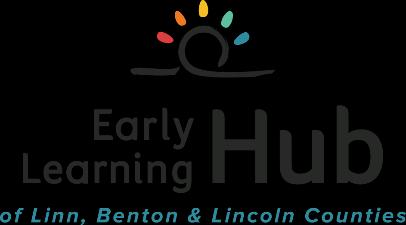Social & Economic Factors
When children live in poverty, there is a high probability that they will not have stable housing, food security, or health insurance. There is also a higher chance that they will drop out of school and have lower overall earnings in life.
by Audrey Mechling, “A Portrait of Poverty in Oregon,” Oregon Center for Public Policy, 2020
The Poverty Line
28% of children under 6 years old in Lincoln County live under the poverty level, followed by 18.6% in Linn County. Both rates are higher than the statewide rate of 14.5%. Benton County has a poverty rate of 14%.
50.3% of children under 6 years old in Lincoln County live under the 200% poverty level, followed by 45.1% in Linn County. Both rates are higher than the statewide rate of 35.3%. Benton County has a poverty rate of 29.5%.
These rates are higher than the statewide rate of 38.6%.
Race and Ethnicity
Lincoln County has the highest percentage of nonwhite children at 39.3%, followed by Benton County at 28.3% and Linn County at 25.6%.
Benton County has 13.1% of its population over the age of 5 that speaks a language other than English. Lincoln County follows with 8.2%, and Linn County with 7.9%.
Parental Employment
Families with children under six have lower parental labor force participation than families with older children (ages 6-17).
Rural Population
Lincoln County has the highest percentage of young children (under 5 years) living in rural areas at 58%, followed by Linn County (36.1%) and Benton County (24.8%) in our region.
Children Living in Rural Areas
Linn Benton Lincoln EL Hub Region
Under 5 years
Under 18 years
Data Source: 2022 ACS 5-Year Estimates Rural communities face more disparities, including higher poverty, unemployment, lack of transportation, limited access to healthcare, lower education levels, and reduced access to quality child care and education.
Housing
Low-income households are more likely to be costburdened by housing costs than middle- or highincome households.
Estimates
It is observed that families with young children are more likely to live in poverty, especially single mothers with young children. In Benton and Lincoln counties, more than 7 out of 10 (73.2% and 76%, respectively) single mothers with young children live in poverty, followed by 68.5% in Lincoln County.
Households with incomes less than $75,000 living in renter-occupied housing are more likely to be costburdened by housing than in owner-occupied units in three counties and Oregon.
Single-parent families have significantly higher percentages of living in rental housing than married-couple families in three counties and Oregon.
Data Source: 2022 ACS 5-Year Estimates.
Data Source: 2022 ACS 5-Year
Food Insecurity
Children living in food-insecure households have limited or uncertain availability of nutritionally adequate food.
Lincoln County (30.2%) has the highest rate of households with children under 18 years old receiving food stamp/SNAP benefits, followed by Linn County (26.7%), both of which are higher than the statewide rate (21.7%), while Benton County has the lowest rate at 16.8%.
Households with children or those with disabilities are more likely to receive food stamp/SNAP benefits compared to all households.
Early Child Care and Education
Availability
Our region is considered a “child care desert” where access to regulated child care is limited for all children, with the greatest need for child care slots for children ages 0 to 2 years.
Only 6 out of every 100 children aged 0-2 have access to regulated slots in Lincoln County, followed by 7 per 100 in Linn County and 21 per 100 in Benton County
Only 17 out of every 100 children aged 3-5 have access to regulated slots in Linn County, followed by 30 per 100 in Lincoln County and 38 per 100 in Benton County.
Affordability
The median annual cost of toddler care in a child care center in Benton, Linn, and Lincoln counties accounts for 16.5%, 22.1%, and 18.2% of the median household incomes, respectively, all higher than the 7%, which is considered to be affordable.
“… lack of affordability often prevents families from accessing quality care and education.”
Oregon Child Care Deserts
Health and Well-Being
Immunization
Linn County had the highest immunization rate in 2022, at 69%. Benton County and Lincoln County followed closely with rates of 68% and 67%, respectively.
Health Insurance
The uninsured rate for children under six years old is highest in Linn County at 7.5%, followed by Lincoln County (4.9%); both rates are above the statewide level of 2.8%. Benton County has the lowest uninsured rate at 2.3%.
Access to Prenatal Care
Lincoln County has the highest percentages of pregnant women with inadequate prenatal care or without prenatal care among the three counties, higher than the statewide rates.
Low Birth Weight
Among the three counties, Lincoln County's rates of low birth weight and very low birth weight newborns are higher than the statewide rates.
Health Complexity
Benton County has the highest percentage of children aged 0 to 5 with complex chronic disease at 6.9%, followed by Linn County at 6.5%. Lincoln County has the lowest rate at 4.9%.
Lincoln County has the highest percentage of parents who have young children aged 0 to 5 having substance use disorder at 23.7%, followed by Linn County at 20.8%. Benton County has the lowest percentage at 17.1%.
Lincoln County has the highest percentage of young children aged 0 to 5 with mental health issues at 15.1%, followed by Linn County at 14.7%. Benton County has the lowest rate at 13.7%.
Children Welfare
Linn County had the highest number of suspected child abuse cases at 3,623, followed by Benton County at 1,517. Lincoln County had the fewest cases at 1,164.
In 2022, incidents of child abuse in three counties primarily came from the threat of harm, followed by neglect.
Lincoln and Linn County had the highest victim rates per 1,000 children at 16.1 and 15.9, respectively, in 2022, followed by Benton County at 13.5, and these rates were higher than the statewide rate of 12.4
Lincoln had the highest rate of children in foster care per 1,000 children at 8.2 in 2022, followed by Linn County at 6.9, and both were higher than the statewide rate of 5.9. Benton County had the lowest rate at 4.2











